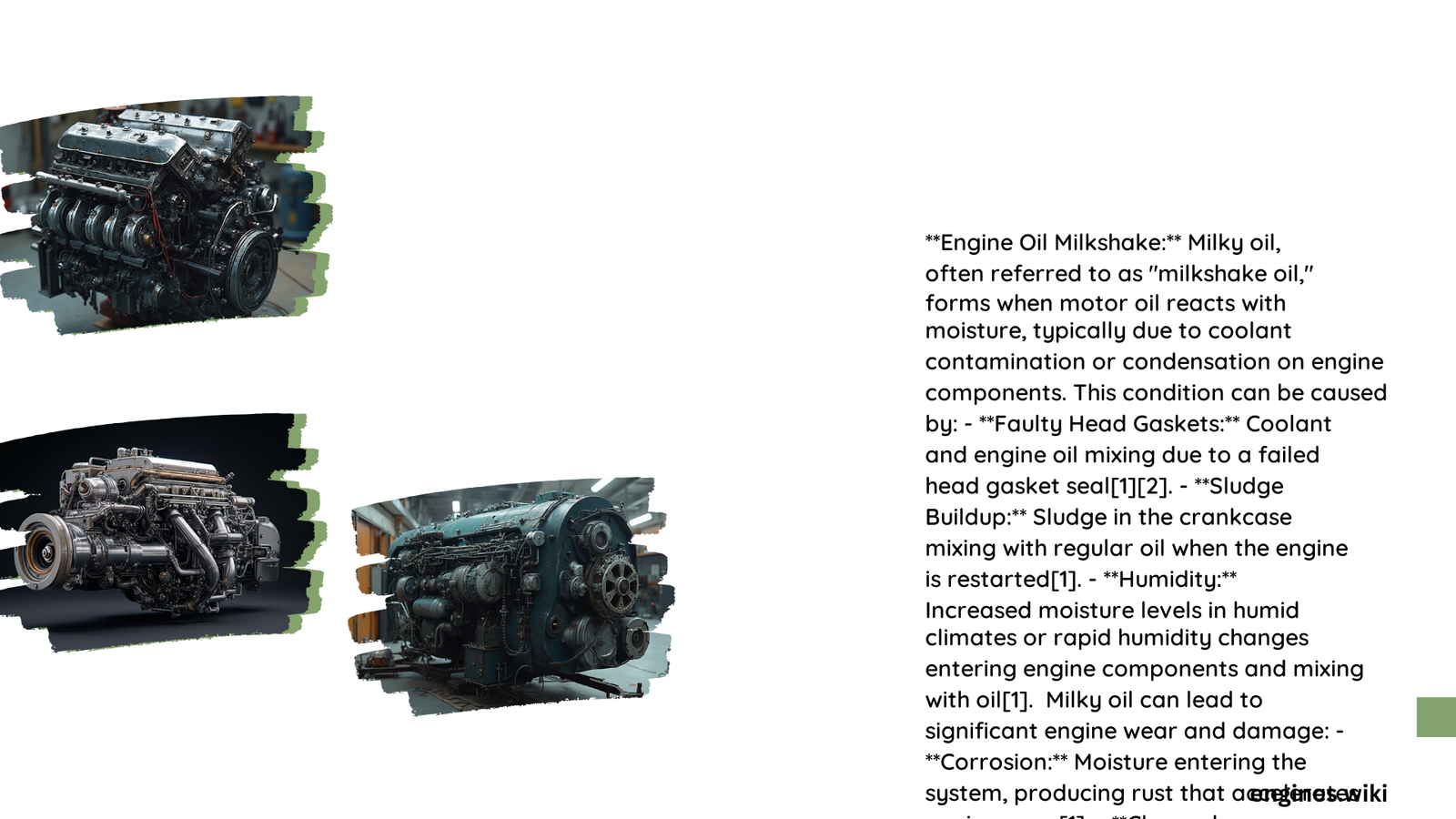Engine oil milkshake represents a critical automotive condition where coolant contaminates engine oil, creating a milky, emulsified substance that signals potential catastrophic mechanical failures. This phenomenon occurs when internal engine components breach, allowing coolant to mix with lubricating oil, compromising engine performance and potentially leading to extensive damage if not addressed promptly.
What Causes Engine Oil to Look Like a Milkshake?
Why Do Coolant and Oil Mix?
Engine oil milkshake typically results from several mechanical failures:
- Head Gasket Breach
- Primary cause of coolant-oil mixing
- Creates pathway between cooling system and lubrication chambers
-
Often caused by:
- Overheating
- Manufacturing defects
- Age-related deterioration
-
Potential Mechanical Failure Points
- Cracked engine block
- Damaged intake manifold gasket
- Compromised cylinder head
| Failure Type | Potential Repair Cost | Complexity |
|---|---|---|
| Head Gasket | $800 – $2,500 | High |
| Engine Block | $3,000 – $5,000 | Very High |
| Intake Manifold | $300 – $1,000 | Moderate |
How to Identify Engine Oil Milkshake?
Visual Diagnostic Indicators
- Oil Appearance: Milky, chocolate milk-like consistency
- Consistency: Foamy, emulsified texture
- Color: Lighter than normal dark engine oil
Performance Warning Signs
- White exhaust smoke
- Reduced engine performance
- Frequent overheating
- Unusual engine noise
What Immediate Steps Should You Take?
Critical Action Protocol:
– Stop driving immediately
– Do not start the engine
– Drain contaminated oil
– Seek professional diagnostic assessment
– Prepare for potential major repair
How Expensive Can Engine Oil Milkshake Repairs Be?
Repair costs vary dramatically based on damage extent:
– Minor repairs: $500 – $1,500
– Moderate repairs: $1,500 – $3,000
– Major engine replacement: $3,000 – $7,000
Can Engine Oil Milkshake Be Prevented?
Preventive Maintenance Strategies:
– Regular cooling system inspections
– Consistent oil change schedules
– Monitor coolant levels
– Address overheating immediately
– Use high-quality engine components
– Follow manufacturer’s maintenance guidelines
Technical Insights for Automotive Enthusiasts
Molecular Interaction Explanation
When coolant enters oil chambers, it creates an emulsification process. Hydrocarbon-based oil molecules interact with water-based coolant, producing a milky substance that destroys lubrication properties.
Professional Diagnostic Recommendations
- Pressure test cooling system
- Inspect head gasket integrity
- Check for microscopic engine block cracks
- Evaluate cylinder head condition
- Analyze oil and coolant composition
Conclusion

Engine oil milkshake represents a serious mechanical warning that demands immediate professional attention. Ignoring early symptoms can lead to catastrophic engine failure, resulting in expensive repairs or complete engine replacement.
